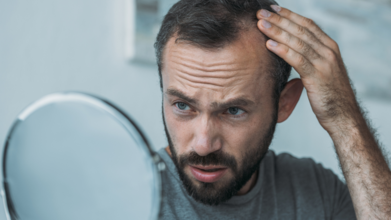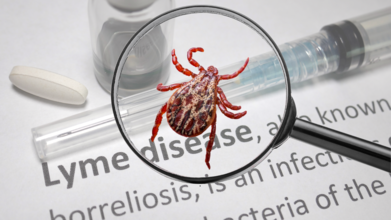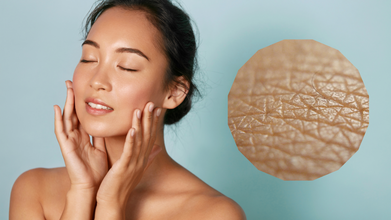- Health Conditions A-Z
- Health & Wellness
- Nutrition
- Fitness
- Health News
- Ayurveda
- Videos
- Medicine A-Z
- Parenting
- Web Stories
No Surgery, No Drugs - Can Hair Loss Be Avoided With Non-Invasive Treatment?

(Credit-Canva)
While hair loss may not seem like a major health concern, it is a big issue for many people. While in theory, it doesn’t affect a person’s day-to-day life, or cause them to major alterations to their lifestyle, it can affect a person’s mental health. Many people who experience extreme hair loss often struggle with self-image issues, confidence as well as other problems. Although there are surgeries that can help those who are experiencing baldness, they can be time consuming and costly, as they do not guarantee proper hair growth.
Scientists may have uncovered a groundbreaking approach to preventing hair loss. A recent study published in Stem Cell Research & Therapy identified the molecular systems that control human hair growth, paving the way for potential non-invasive treatments for pattern baldness.
Targeting the Root Cause of Hair Loss
This study focused on a common type of hair loss called androgenetic alopecia, which you might know as male or female pattern baldness. It's actually the most common kind of hair loss worldwide. Right now, if you're dealing with this, your options might include expensive hair transplant surgeries (some people even travel to places like Turkey for cheaper deals), or using medications that involve hormones or special creams you put on your scalp.
But this new research is different. Instead of just slowing down hair loss or offering invasive procedures, it's looking into something entirely new: using stem cell therapy. The scientists wanted to understand the tiny signals inside our bodies that tell hair follicles to grow. Their goal was to figure out how to adjust these signals to get hair growing again in people who are balding.
How Common Is Androgenetic Alopecia?
Androgenetic alopecia, commonly known as male or female pattern baldness, is a widespread condition affecting a significant number of people in the United States. It's estimated that 50 million men and 30 million women in the U.S. experience this type of hair loss.
While it can begin as early as a person's teenage years, the likelihood of developing androgenetic alopecia increases with age. In fact, over half of all men above the age of 50 show some degree of hair loss. For women, hair loss from this condition is most commonly observed after menopause.
Awakening "Sleeping" Hair Follicles
For a long time, doctors believed that hair loss from androgenetic alopecia was permanent because the hair follicles were "dead." But this study found something surprising: the hair loss isn't caused by dead cells, but by cells that are just dormant, or "asleep."
The researchers discovered that sometimes, the molecular messages (like tiny signals) that tell hair to grow get interrupted. When these signals don't work correctly, the hair follicles don't actually die. Instead, they just enter a "sleep mode" where they stop producing hair that you can see. This was found during experiments done on mice. It's like the hair follicle just hit the snooze button and stopped working.
Future of Non-Invasive Hair Regrowth
This discovery is a big deal! It suggests that we might be able to "wake up" these sleeping hair follicles and get them growing again. The idea is to fix the broken communication between these tiny systems in our bodies.
This breakthrough could lead to exciting new non-invasive treatments. That means you might not need surgery or harsh medications to regrow hair. Instead, therapies could focus on actually bringing back your natural hair, rather than just trying to cover up bald spots.
Lyme Disease In US: How Worried Should You Be Of Ticks?

Credits: Canva
The United States have been long suffering from various disease, and now is the season of ticks. On the rise is Lyme disease, and tick bites have recorded the a 5-year high ER visits in Northeast, reports 12 News. The Health and Me had previously reported on the surge that ERs across the US is experiencing, wit the highest in July, since 2017. he Centers for Disease Control and Prevention (CDC) reports that close to 31 million Americans suffer from tick bites every year, and this summer saw a sharp increase, particularly in the Northeast.
The CDC says that the Fordham Tick Index, which monitors tick activity in southern New York, Connecticut, and northern New Jersey, is now at a "very high" risk level, 9 out of 10.
What Could Be The Reason For This High?
Experts are attributing this surge to environmental shifts, growing deer numbers, and more human presence within woodlands.
Not Just The US, But UK Too Issues A Public Health Warning
Previously Health and Me also reported that with the unexpected wave of heat in the UK, the UK Health Security Agency (UKHSA) has issued a public warning against a small, almost invisible threat that could send you to the hospital.
Taking simple steps can help you avoid these bugs that could leave you with flu-like symptoms lasting for weeks.
Case Study
Amid the tick season, Health and Me reported on a case of an 8-year-old boy who has Lyme disease. The case points out on the cases of how, when symptoms ignored, or with lack of caution and awareness can ticks become a real threat.
Lyme Disease: How Worried Should One Be Of Ticks?
Most tick-borne diseases in the United States are rare, with one big exception, reports the New York Times (NYT). Lyme disease is far more common than any other tick-related illness.
In fact, it's 12 times more prevalent than the next most common disease, anaplasmosis. In some regions, up to 50% of adult ticks carry the bacteria that cause Lyme, making it the leading tick-borne illness in the country.
“That’s our biggest concern,” said Erika Machtinger, an entomologist and head of the vector-borne disease team at Pennsylvania State University Extension, as noted by the NYT. “There aren’t vaccines in development for anything else; there is for Lyme disease.”
While Lyme disease is typically treatable, especially if antibiotics are taken within 72 hours of a bite, it can be tricky to diagnose. When missed, it may lead to lingering symptoms that persist for years after treatment.
Location Matters Most
Ticks exist throughout most of the continental U.S., but risk levels vary greatly by location. Some places have ticks that barely transmit disease, while others see thousands of Lyme cases each year.
“Where you live matters more than anything,” explained Jean Tsao, an ecologist and Lyme expert at Michigan State University, reports NYT.
That can influence everything — from what one wears on a hike to how they move through outdoor spaces.
For instance, in Arizona, where tick-related illnesses are rare, residents might wear shorts and sandals without much concern.
But in Michigan, where Lyme disease is on the rise, Tsao recommends wearing long pants, socks with shoes, and clothing treated with Permethrin, a fabric-safe repellent.
“I never walk into the woods with Tevas or Chacos anymore,” she said. “And I wouldn’t say I’m paranoid.”
How Common Is Lyme Disease?
Lyme disease is most common in the Northeast and Upper Midwest, where tick populations have been established for decades. In 2023, Rhode Island reported over 2,800 cases, while Texas had only 27. Areas newly seeing Lyme-carrying ticks, like parts of Michigan, may still have fewer cases, but the numbers are rising.
Even urban parks can pose a risk, as ticks only need a few host animals like birds, rodents, or raccoons to survive.
Tick Type Makes a Difference
Not all ticks are equally dangerous. The blacklegged tick, also known as the deer tick, is the primary carrier of Lyme bacteria.
Other types, like the lone star tick or dog tick, can transmit disease but pose less of a threat.
Blacklegged ticks go through three life stages, and take a blood meal at each. Adults are most likely to carry Lyme, while larvae rarely do. Surprisingly, most Lyme infections happen during the nymph stage, when ticks are smaller and harder to see.
These tiny nymphs often attach in areas that are hard to inspect. “The toilet is a great place to check for ticks,” said Machtinger. “You can reach all your crevices. I know it sounds weird, but it’s true.”
If someone finds a tick, the first step is to identify the species. This can be done via a healthcare provider, a tick ID website, or local university extension services. Ticks can be stored in a Ziploc bag or between strips of Scotch tape for identification. If the tick is a deer tick and the bite occurred within 72 hours, a single dose of antibiotics can reduce the risk of illness. Otherwise, one should monitor for rashes and flu-like symptoms.
Tick Behavior Basics
Ticks can bite anywhere on the body, but they tend to favor warm, hidden areas like the groin, armpits, and behind the ears. Where the tick attaches can also depend on activity. For example, a tick found while hiking is likely to be on the lower body, while one from gardening might show up on an arm.
Those with darker skin tones may find ticks harder to detect. “You have to get to know your freckles really, really well,” said Machtinger.
The good news? Ticks don’t bite immediately, and they typically need 24 hours to transmit Lyme after attaching. That means regular tick checks, especially after spending time outdoors, are highly effective. Showering soon after outdoor activity can also help wash off ticks before they embed.
Additionally, ticks die quickly in a clothes dryer, making it a good idea to tumble dry outdoor clothes on high heat after an outing.
Despite their reputation, ticks are delicate creatures that can be hard to study in labs. Over time, scientists who work with them may even find them "almost cute," Machtinger added. While most people may never go that far, understanding the real risks they pose, and how to prevent them, can take some of the fear out of tick season.
Doctor Shares 5 Tips For Healthy Skin; The Fourth One Will Totally Shock You!

When the sun’s blazing, your skin is usually the first to complain. Sweat, stickiness, breakouts, and redness. It’s like your face throws a full-blown tantrum every summer. But what if a few food tweaks could help you survive the sizzle with glowing, Instagram-filter-free skin?
Dr Geetika Mittal, dermatologist, is dishing out some no-nonsense, kitchen-level skin wisdom. Her summer skincare rules are so simple, they might just be hiding in your fridge or snack shelf. And yes, one of them will surprise you.
1. Say Yes to Vitamin E Foods
According to Dr Mittal, foods rich in vitamin E are your skin’s best summer buddy. Because they pack anti-ageing powers and act like a little sunscreen from within. “Vitamin E helps protect the skin from UV damage and supports a youthful, even-toned look,” she shares.
Her go-to options? California almonds (for a crunchy fix), avocados (for toast, of course), and spinach (for balance). “Almonds, in particular, offer healthy fats and vitamin E (alpha-tocopherol), which strengthen the skin’s defence against sun-induced damage and improve texture,” she adds.
2. Cut Back on the Sweet Stuff
If you're the type who dives into dessert after every meal, brace yourself. Dr Mittal warns, “Excess sugar harms both your overall health and your skin.” AGEs, those advanced glycation end products that break down collagen and elastin. It will result in saggy skin and dullness.
She explains that sugar also “spikes insulin levels, which can increase oil production, worsening acne and dark spots, especially in sweaty summer conditions.” Give sugar the boot, and switch to natural options like jaggery or honey. Not as shocking as quitting sugar altogether, but hey, your skin will thank you.
3. Ditch Oily, Fried Foods
Those crispy fries and golden samosas might be ruining your skincare game. Dr Mittal says, “Greasy and fried foods, especially in summer, can contribute to clogged pores, excess oil, and acne breakouts.”
“If you’re craving snacks, go for healthier choices like almonds,” she suggests. Not only do they come packed with 15 essential nutrients, but they also win major brownie points from the Indian Council of Medical Research. “Almonds are an excellent snack swap, offering protein, vitamins, and skin-nourishing benefits,” she confirms.
4. Embrace the Power of Omega-3s
Fish might not be the first thing that comes to mind when talking skincare, but Dr Mittal says it should be. “Including omega-3-rich foods like salmon in your diet can help calm skin irritation and reduce redness, common during summer.”
These fatty acids work behind the scenes to keep your skin happy with proper hydration, inflammation control, and that enviable soft glow. “If your skin feels stressed or inflamed from sun exposure, adding Omega-3s can be a natural way to support its recovery,” she adds.
5. Hydrate, Hydrate, Hydrate!
No summer skincare list is complete without the hydration shout-out. Dr Mittal keeps it classic here: “Drinking plenty of water helps counter the moisture lost through sweat, keeps the skin plump, reduces the appearance of fine lines, and supports a smooth, even texture.”
She points out that staying hydrated also flushes out toxins, giving you that dewy, bright summer glow. So go ahead, chug that water bottle like it’s the elixir of life. Because, frankly, it kind of is.
Dr Mittal’s summer skincare commandments are surprisingly doable and mostly snackable. By loading up on nutrient-rich foods, ditching the greasy and sugary culprits, and staying well-hydrated, you can sail through summer without breaking a sweat.
Male Fertility: How Moving More and Being Involved Makes All the Difference

When we talk about fertility, conversations usually revolve around ovulation trackers, hormonal injections, and what women should or shouldn’t be doing. But this lopsided approach is clinically outdated. Male factors contribute to nearly 50% of all infertility cases. Yet, most consultations still focus solely on the female partner, often reducing men to the role of sperm donors with zero follow-up. Men have hormones, stress, and lifestyle risks too.
Why Fitness Isn’t Just About Abs: It's About Sperm
“Moderate, regular physical activity can significantly improve male reproductive health,” says Dr Kanchi. And no, that doesn’t mean training for a triathlon. It means adding just enough movement to boost hormone balance, sperm quality, and even mental health. According to her, gentle workouts can improve testosterone levels, sperm motility and concentration, and lower the stress hormone cortisol. Basically, fitness isn’t just about getting beach-ready; it’s about getting baby-ready.
Testosterone, Tight Shorts, and Other Cautionary Tales
Before you go signing up for a 6-day bootcamp, Dr Kanchi does drop some caution. “Excessive or intense training, especially endurance activities like long-distance running or heavy bodybuilding, can negatively impact male fertility,” she warns. Why? Testicular overheating, spiked cortisol, and suppressed testosterone. Also, tight athletic wear during long bike rides should be avoided.
Balance is the fix. Not burnout. Dr Kanchi recommends walking, yoga, swimming, bodyweight training, and light resistance workouts. Cycling? Okay in moderation, with padded shorts and plenty of breaks.
Make Way for the Fertility-Friendly Workout Routine
If you’re building a fertility-first fitness plan, Dr Kanchi has a checklist:
- Consistency over intensity: Aim for 150 minutes a week. That’s 30 minutes, five days. Easy.
- Keep workouts under an hour: No one’s asking for Ironman-level endurance.
- Cool it: Literally. Skip saunas, tight spandex, and boiling hot pools.
- Hydrate like it’s your job: Dehydration messes with energy and ejaculate.
- Prioritise rest days: Your sperm need their beauty sleep too.
- Pair movement with diet: Think antioxidants, lean protein, and fewer biscuits.
- IVF and the Fitness Balance Beam
Dr Kanchi says that physical activity still plays a role even during IVF, but it needs to be gentle and strategic. “Avoid high-impact sports or heavy lifting during sperm collection phases,” she says. Focus on relaxation, emotional wellness, and stress management instead. If possible, rope in a fertility-aware trainer or physiotherapist.
Why Fertility Isn’t Just Physical; It’s Mental Too
Trying to conceive, especially via IVF, can feel like an emotional obstacle course. Men are often told to ‘stay strong’ while bottling up anxiety, helplessness, and grief. “Physical activity becomes not just a fitness tool but a mental health lifeline,” says Dr Kanchi. Even a walk or 20-minute yoga session can reduce depression, boost motivation, and bring back a sense of control.
Fertility Isn't Just a Woman's Matter
For Dr Bhavna Banga, Director of Infertility at Cloudnine Group of Hospitals, it is clear: “Fertility care should not be a solo act.” She believes it's time to give men equal space in the fertility room along with access to emotional support, advanced diagnostics, and transparent treatment discussions. Why? Because unexplored male issues like sperm DNA fragmentation or hormonal imbalances could be the missing link in repeated IVF failures.
“Couples who walk this path together, emotionally and medically, emerge more connected, more informed, and better prepared,” she says.
Dr Kanchi says, “Just move consistently, mindfully, and with your long-term health in mind.” And Dr Banga? She wants every man to feel like an equal part of the fertility equation. Because when both partners are equally heard, involved, and supported, fertility care becomes more hopeful for everyone.
© 2024 Bennett, Coleman & Company Limited

